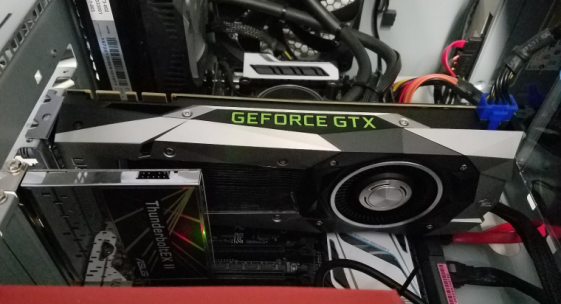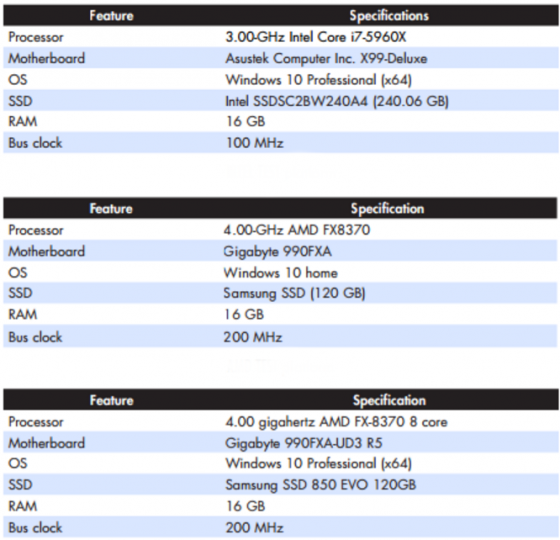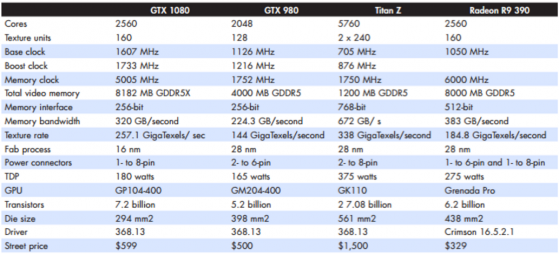Nvidia’s first Pascal-generation graphics board for gaming packs a powerful punch.
By Robert Dow
[Editor’s note: Detailed benchmark results are available in the version of this article published in the May 23, 2016 edition of Jon Peddie Research TechWatch.]
To test the Nvidia GTX1080, we focused on DX12-based games. The GTX 1080 is a next-gen board, so we are looking ahead, taking it to the next level.

We ran all the games at two resolutions (3440 × 1440, and 3480 × 2160) with features set to Ultra. We tested these games in FXAA, SSAA, and turned up the Super-sampling to 2X as well, keeping in mind that these are high-end enthusiast AIBs. Not surprisingly, the Pascal-based GTX 1080 performed outstandingly well in the game tests.
The GTX 1080 AIB, based on the P104 GPU, has 2560 Cuda cores packed into 20 streaming multi-processors (128 cores each), with 20 geometry units, 1670 texture units, and 64 raster operators (ROPs). The chip is running fourth-gen delta color compression with a lossless compression improvement (compared to the GTX 980) of 1.7X, which is pretty phenomenal, but also necessary at these elevated clock rates and expanded memory width.
We tested the GTX 1080 against the Maxwell-based GTX 980, the Titan Z, and XFX’s version of the AMD Radeon R9 390. For the 4K tests, we ran the games on two separate PCs; for the 3440 x 1440, we used an Intel-based system; see the chart for specification details.

Ashes of Singularity. The latest version of Ashes of Singularity has a built-in benchmark that stresses the GPU and CPU, and uses the in-house Nitrous game engine that supports DirectX 12. This is a real-time strategy PC game taken to a substantially larger scale. Instead of micromanaging single battles within a defined area, players are given the opportunity to wage war across large expanses of a planet. A smarter AI has been built specifically for the game to micromanage the individual movements and actions of units, giving players a chance to truly take on the role of commanding large-scale battles without the need to command every unit
Doom. Doom is the first game to be released that is based on the id Tech 6 engine and provides the game with dynamic lighting and physically based rendering. Doom also takes advantage of a low-level “near-the-metal” Vulkan API. I have never been a Doom franchise fan, but the images in this game are stunning; it’s worth playing just for the graphical journey.
Tomb Raider. Crystal Dynamics developed Tomb Raider using a heavily modified version of the Crystal Engine. The latest installment of the Lara Croft series features the familiar but heavily modified Crystal Dynamics Engine. Released for Microsoft Windows in January 2016, Lara’s father research leads her to Russia in an attempt to uncover the secrets left behind. We chose Rise of Tomb Raider because it utilizes both DX 11 and 12. We tested Tomb Raider in both FXAA and 2X SS. As expected, turning up the SSAA taxes even the best AIBs.
Hitman. Hitman is based on the inhouse IO interactive game engine and is one of the first games to try to take advantage of DX12—we say try because there are reports of multiple bugs with the DX 12 version. However, we decided to run the benchmarks in DX 12 despite some of the IO’s issues.

What do we think?
As expected the first Pascal-based gaming graphics card performed well above expectations. The GTX 1080 consistently delivered a 40% performance boost; 39% in Doom on average in 3440 × 1440, expanding to 49% in 4K 3440 × 1440. On Doom 30% better; in Tomb Raider in 3440 × 1440 a 47% performance jump.
This is a serious gamer’s graphics board; buyers will not be disappointed.





